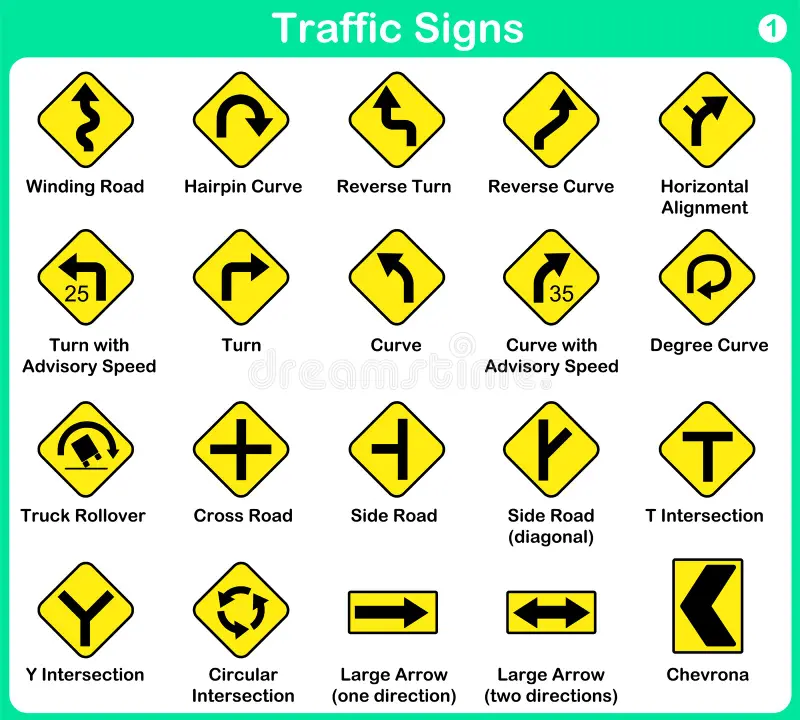Sri Lanka’s road signs follow a system similar to many international standards but also include unique features specific to the country. They use symbols, colors, and text in Sinhala, Tamil, and English, reflecting the country’s linguistic diversity. Here’s an overview of the types of road signs commonly found in Sri Lanka:
1. Regulatory Signs
These signs are mandatory and indicate rules or prohibitions. Examples include:
- Stop Sign: A red octagon with “STOP” in bold letters.
- No Entry: A red circle with a white horizontal bar.
- Speed Limit: Black numerals on a white circle with a red border.
- No Parking/No Stopping: A red circle with the respective symbols or text.
2. Warning Signs
These alert drivers to potential hazards ahead. Examples include:
- Sharp Turns: Black arrow symbols on a yellow triangular background.
- Animal Crossings: Images of elephants or cattle to warn of crossing animals.
- School Zone: Symbol of children crossing, often with additional text.
- Slippery Road: Depiction of a skidding car.

3. Guide Signs
Provide information to assist drivers in navigation.
- Destination Signs: Blue boards with white text showing town names and distances.
- Tourist Attractions: Brown signs with white text and symbols indicating cultural or natural sites.
- Highway Signs: Green boards with white arrows and text indicating entry/exit points.
4. Informational Signs
Offer general information to road users. Examples:
- Fuel Stations: Icons indicating the presence of a petrol/diesel station.
- Rest Areas: Symbols for food, restrooms, and parking.
- Emergency Services: Locations for hospitals, police, or fire services.
5. Temporary Signs
Used during construction or roadwork. Typically orange with black text or symbols.
Sri Lankan road signs adhere to safety and ease of understanding, ensuring that both locals and tourists can navigate efficiently.


0 Comment